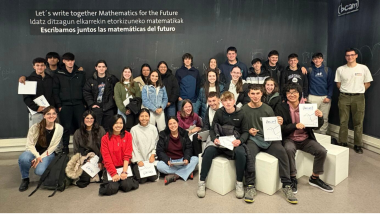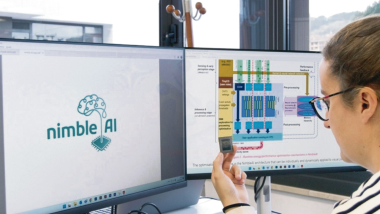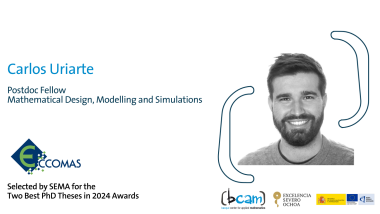Jorge Cayama will defend his doctoral thesis on Thursday, July 2nd
- Due to the restrictions caused by the COVID-19 pandemic, the defense will be held online and users will be able to follow it live
Jorge Cayama obtained a Bachelor’s Degree in Mathematical Sciences from Universidad Centroccidental “Lisandro Alvarado” (Venezuela) in 2008 and a Master’s in Applied Mathematics in Engineering from Universidad de Los Andes (Venezuela) in 2012.
In 2016, he joined the University of the Basque Country as a PhD student. He is also a member of the ERC project HADE (Harmonic Analysis and Differential Equations: New challenges) led by Prof. Luis Vega at the Basque Center for Applied Mathematics – BCAM and the University of the Basque Country – UPV/EHU.
His PhD thesis, Pseudospectral methods for the fractional laplacian on R, has been supervised by Ph.D. Francisco de la Hoz (UPV/EHU) and Ph.D. Carlota Cuesta (UPV/EHU).
Due to the COVID-19 pandemic, the defense will be held online, through the platform BBCollaborate. It will take place on Thursday, July 2nd at 16 pm, and users will be able to follow it live using the following link: https://eu.bbcollab.com/collab/ui/session/guest/b8320a9aa22c4aedafefaaafba43b42c
On behalf of all BCAM members, we would like to wish Jorge the best of luck in his upcoming thesis defense.
PhD thesis title: Psoudospectral methods for the fractional laplacian on R
Abstract:
In this thesis, first, we propose a novel pseudospectral method to approximate accurately and efficiently the fractional Laplacian without using truncation. More precisely, given a bounded regular function defined over R, we map the unbounded domain into a finite one, and represent the resulting function as a trigonometric series. Therefore, a key ingredient is the computation of the fractional Laplacian of an elementary trigonometric function. As an application of the method, we do the simulation of Fisher’s equation with the fractional Laplacian in the monostable case.
In addition, using complex variable techniques, we compute explicitly, in terms of the 2F1 Gaussian hypergeometric function, the one-dimensional fractional Laplacian of the Higgins functions, the Christov functions, and their sine-like and cosine-like versions. After discussing the numerical difficulties in the implementation of the proposed formulas, we develop another method that gives exact results, by using variable precision arithmetic.
Finally, we discuss some other numerical approximations of the fractional Laplacian using a fast convolution technique. While the resulting techniques are less accurate, they are extremely fast; furthermore, the results can be improved by the use of Richardson’s extrapolation.
Related news
About the center
About the center




